Abe Lincoln in Illinois

Brief Synopsis
Cast & Crew
John Cromwell
Raymond Massey
Gene Lockhart
Ruth Gordon
Mary Howard
Minor Watson
Film Details
Technical Specs

Synopsis
In 1831, young Abe Lincoln leaves his father's log cabin to make his way in the world. On his journey to New Orleans to deliver a load of pigs, Abe meets Ann Rutledge in New Salem, Illinois. His delivery completed, Abe returns to New Salem, where he enters into a small business with storekeeper Denton Offut, falls in love with Ann and wins the respect and friendship of the townspeople. Abe is so well liked that Ninian Edwards of the Whig Party comes to town to convince him to run for State Assembly. Abe accepts the challenge, but his victory is overshadowed by Ann's death, and haunted by a sense of doom and lack of ambition, he leaves the legislature after his first term to return to the law. A fateful meeting with Mary Todd, an ambitious, driven woman, however, changes the course of Abe's life for Mary is determined to force Abe to fulfill his destiny. Mary's determination drives Abe away, because he realizes that entering politics and taking a stand on slavery will mean the dissolution of the Union. However, after a visit to New Salem, Abe returns, ready to accept Mary and her sense of purpose. They are married, and several years later, when the tension between North and South reaches a danger point, Abe runs against his old opponent, the well-known and established Stephen Douglas. In a series of electrifying debates, Abe is catapulted into the national consciousness. Knowing that his election to president will mean the secession of the South, Abe resolutely accepts his victory and leaves for Washington, bidding his cheering friends and home in Illinois farewell, never to return again.

Director

John Cromwell
Cast
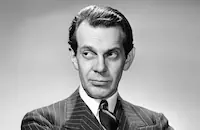
Raymond Massey

Gene Lockhart

Ruth Gordon

Mary Howard

Minor Watson

Alan Baxter
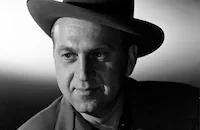
Howard Da Silva

Dorothy Tree
Aldrich Bowker
Maurice Murphy

Louis Jean Heydt

Clem Bevans
Harlan Briggs
Herbert Rudley
Andy Clyde
Roger Imhoff
Edmund Elton
Leona Roberts
Florence Roberts
George Rosener
Trevor Bardette
Syd Saylor

Elisabeth Risdon
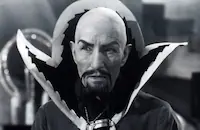
Charles Middleton
Alec Craig
Napoleon Simpson

Fay Helm
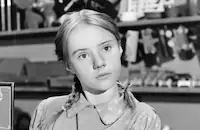
Peggy Ann Garner
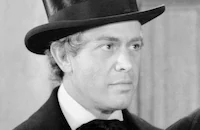
Harvey Stephens
Edwin Mills
Sonny Bupp
Henry Blair
Erville Alderson
Dorothea Wolbert
Jane Corcoran
Kathleen Proctor
Adda Gleason
Harry Humphries
Tom Chatterton
Robert Middlemass
Ed Fielding

Bryant Washburn
William Worthington
Lorin Raker

Ian Wolfe
Guy Usher
George Guhl
Dan Clark
Gus Glassmire
Paul Everton
Del Henderson
Wallis Clark
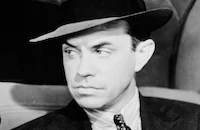
Paul Guilfoyle
Victor Kilian
Emory Parnell
George Chandler
Selmer Jackson
Robert Elliott
Kathryn Sheldon

Fern Emmett
C. Hayes

Byron Foulger
Dick Elliott
Milt Kibbee
Landers Stevens
Esther Dale
John St. Polis
Florence Rutledge
William Royle
Crew
James Barker
Emmett Bergholz
H. J. Brandon
Stafford Campbell
Adele Cannon
Frank Carr
Don Cash
Stan Chandler
Carroll Clark
Tommy Clark
James Daly
Lillian K. Deighton
Bill Dorfman
Eugene Fribourge
Earl Gilpin
Max Gordon
Ledge Haddow
Bert Hall
William Handy
Doris Harris
E. T. Harris
William Hartman
George Hively
James Wong Howe
H. Hulburd
Grover Jones
Alex Kahle
Dan Kellerber
Corynn Kiehl
W. Kimpton
D. Kohler
K. Koontz
Ann Landers
Charles Leonard
Harold Lewis
Henry Mancke
Charles Matthews
Jack Mccrackin
Hugh Mcdowell Jr.
Norbert Miles
William Monroe
Walter Plunkett
Van Nest Polglase
Eddie Pyle
William Record
Charles Richards
David Robel
Casey Roberts
Grayson Rogers
Hazel Rogers
Mauri Seiderman
Louis Shapiro
Robert E. Sherwood
Dewey Starkey
Douglas Travers
Vernon Walker
Roy Webb

Videos
Movie Clip




Trailer
Hosted Intro
Promo
Film Details
Technical Specs

Award Nominations
Best Actor
Best Cinematography
Articles
Abe Lincoln in Illinois
The film was based on the popular Pulitzer-Prize-winning stage play of the same name by Robert E. Sherwood. While Sherwood was still writing the play, he didn't have any specific actor in mind for the part of Lincoln. However, one night in 1936, Sherwood's friend actress Ruth Gordon gave him opening night tickets to the Broadway play Ethan Frome in which she was starring opposite Raymond Massey. Sherwood immediately recognized Massey's talent and striking physical resemblance to the gangly Lincoln. According to Gordon's 1976 memoir My Side, Sherwood excitedly phoned her after the play saying, "You've found my Abe Lincoln for me! Ray's a friend, but I never thought of him."
When the stage version became a success in New York during the fall of 1938, offers to buy the movie rights began pouring in from all the major studios. However, Massey held little hope of being asked to reprise his role on the big screen since Hollywood usually preferred to use big name movie stars. When producer Max Gordon offered him the film role, he was elated. Massey kept his approach to playing Lincoln simple. "I had done no research beyond reading Carl Sandburg's The Prairie Years," Massey recounted in his 1979 autobiography, A Hundred Different Lives, "and the Lincoln books that everyone reads." Instead, he based his characterization primarily on Sherwood's screenplay.
The first three weeks of shooting took place on location in Oregon. It was slow going, according to Massey, due to a lack of cooperation from the various animals being used in the early farm life scenes. The filming of the first scene was disrupted by renegade chipmunks that were "liberated" at the word 'Action!' and bit the property master on the set. And it took two days to shoot a scene in which fifty pigs on Lincoln's raft careen over a short waterfall--a scene that ended up lasting roughly one minute on film. According to Massey in his autobiography, the Oregon production crew ended up with only "an astonishing small amount of finished footage, about 8 percent of the total picture. But once back in the studio we really made progress. In only one night on the RKO back lot, in a stifling temperature of 101, we shot the Lincoln-Douglas debate scene. That was about thirteen minutes of finished film." More than anything, Massey enjoyed working with his fellow actors Gene Lockhart (as Stephen Douglas) and former Ethan Frome co-star Ruth Gordon (as wife Mary Todd Lincoln).
All in all, Massey was pleased with his work on Abe Lincoln in Illinois but when he saw a preview of the film during the editing phase, he noticed something was missing: "I realized that an entire scene had been cut, the prairie scene with the beautiful prayer for the sick boy! The fulcrum of the stage play...the scene which explained Abe Lincoln's recognition of his destiny - that scene had been excised from the picture!" He pleaded his case to the director but finally let the matter drop when producer Max Gordon shouted at him, "You've been paid, mind your own business!"
When Abe Lincoln in Illinois was completed and ready for release, Washington D.C. was chosen as the logical place for the film's world premiere. At first RKO, who was releasing the film, had wanted Massey to arrive by train in full Abraham Lincoln costume and makeup. Producer Max Gordon vehemently rejected the idea, and it subsequently didn't happen. Instead, Massey escorted First Lady Eleanor Roosevelt to the Keith's Theater as his guest for the preview. Her husband, President Franklin D. Roosevelt, had watched the film the night before at a private White House screening and, according to Massey, Roosevelt seemed to enjoy it. "He wrote those speeches himself!" Roosevelt reportedly muttered in admiration during the movie.
The 16th president was a source of popular interest when Abe Lincoln in Illinois was released in 1940. Less than a year before, John Ford's Young Mr. Lincoln (1939) had come out covering much of the same material and starring Henry Fonda in the title role. The positive values that Lincoln represented lent optimism to Americans, as the threats of Hitler and Totalitarianism were very much in the public consciousness. In addition to James Wong Howe's nomination for cinematography, Abe Lincoln in Illinois also received an Academy Award nomination for Raymond Massey as Best Actor. Though he went on to star in many other films, Massey always remained best known for this performance.
Producer: Max Gordon
Director: John Cromwell
Screenplay: Robert E. Sherwood, Grover Jones
Art Direction: Van Nest Polglase, Carroll Clark
Cinematography: James Wong Howe
Editing: George Hively
Music: Roy Webb
Cast: Raymond Massey (Abraham Lincoln), Ruth Gordon (Mary Todd Lincoln), Gene Lockhart (Stephen Douglas), Mary Howard (Ann Rutledge), Dorothy Tree (Elizabeth Edwards).
BW-110 min.
by Andrea Passafiume

Abe Lincoln in Illinois
Abe Lincoln in Illinois
Ironically, Young Mr. Lincoln was the more successful of the two and is better known today even though Massey's performance as Lincoln is the one for which he will forever be remembered. Massey had perfected the role on Broadway in Robert Sherwood's masterful play, which opened in October 1938. The play had special resonance in Depression-era America; Lincoln's determination to fight for the moral principles upon which the United States was founded felt urgent and timely. As the play became a huge hit and won the Pulitzer Prize, Hollywood took notice, even though the industry knew that Fox was already in production on Young Mr. Lincoln. Offers for the movie rights started pouring in.
Massey did not hold out much hope that he would get to reprise his role because, as he later explained, "In the twenties and thirties a stage actor was hardly ever chosen to repeat his role on the screen. Good plays were reserved for the many stars on contract. In trade papers and gossip columns, about the only star who was not mentioned as a probability for the screen Abe was W.C. Fields." But as it turned out, independent producer Max Gordon wound up with the film rights (for $250,000, a hefty sum in those days) and chose Massey to play the role. Massey was still performing on Broadway and agreed to do it with the assurance that he would rejoin the original Broadway cast for a touring production once shooting was over.
The picture was shot mostly in Hollywood with three weeks on location in Oregon, doubling as Illinois. Writing in his memoirs, Massey recalled sharing the screen in Oregon with many barnyard animals, including "fifty pigs which the young Lincoln managed to deposit in the McKenzie River when, by his inexpert navigation, a raft carrying the pigs careened over a waterfall. It was a scene which could only be shot once a day, for it took some eight hours to get the raft back above the waterfall. But without any rehearsal, the pigs entered into the spirit of the scene and all gave superb performances, acting with porcine abandon. They were all tilted into the river and showed the onlooking salmon how swimming should really be done. We got it on the first take with all the cameras."
All that work on the pig sequence resulted in about one minute of screen time. By contrast, the crew shot the Lincoln-Douglas debate scene, one of the highlights of the movie, in a single night on the RKO lot - resulting in 13 minutes of finished film.
When the release print was ready in December 1939, Massey was touring with the stage company in Detroit. He saw the film there and was surprised to see that a key scene of the story had been deleted: "the prairie scene with the beautiful prayer for the sick boy, the scene which explained Abe Lincoln's recognition of his destiny. Without it the story had become a documentary, a procession of episodes." Massey called Robert Sherwood, who was "heartbroken" about the cut but had resigned himself to it. Determined to fix the problem, Massey then called the film's producer, Max Gordon, but all he got was a terse, "You've been paid, mind your own business!" That was that.
Abe Lincoln in Illinois debuted in Washington, D.C. The night before the official premiere, Massey, Sherwood and their wives had dinner at the White House with President Franklin D. Roosevelt, followed by a special screening for the President. Massey remembered, "Bob and I sat next to President Roosevelt. He was in jovial spirits and seemed to enjoy the picture. He muttered, 'He wrote those speeches himself!'" Critics loved Abe Lincoln in Illinois and Raymond Massey was nominated for a Best Actor Oscar®. James Wong Howe also was nominated for his black and white cinematography. But the public stayed away and the studio took a $750,000 loss. Perhaps they'd just been Lincolned out.
Massey would play Lincoln again in the movie How the West Was Won (1962), the play The Rivalry, and on TV and radio.
Producer: Max Gordon
Director: John Cromwell
Screenplay: Robert E. Sherwood, Grover Jones
Art Direction: Van Nest Polglase, Carroll Clark
Cinematography: James Wong Howe
Editing: George Hively
Music: Roy Webb
Cast: Raymond Massey (Abraham Lincoln), Ruth Gordon (Mary Todd Lincoln), Gene Lockhart (Stephen Douglas), Mary Howard (Ann Rutledge), Dorothy Tree (Elizabeth Edwards).
BW-110 min. Closed captioning.
by Jeremy Arnold
Abe Lincoln in Illinois
Quotes
Trivia
Based on Robert Sherwood's Pulitzer Prize winning play.
Notes
Studio records note that RKO paid $120,000 for Robert E. Sherwood's story. Raymond Massey also portrayed the role of Abraham Lincoln in Sherwood's Pulitzer Prize-winning stage production. According to studio publicity records, Sherwood wrote the play with Massey in mind. An article in Los Angeles Examiner adds that Sherwood refused to sell the rights of the play to Samuel Goldwyn because Goldwyn wanted to star Gary Cooper in the title role and Sherwood insisted that Massey play Lincoln if a film was to be made of his play. Studio records also note that actors Howard da Silva and Herbert Rudley reprised their stage roles for this film. Studio records add that Francis Ford was originally to have played the role of the stage driver. News items in Hollywood Reporter note that the studio wanted to borrow Andrea Leeds from Samuel Goldwyn, possibly for the role of "Anne Rutledge," but she was not in the released film. The picture was shot on location on the MacKenzie River outside Eugene, OR. A news item in Hollywood Reporter notes that Sherwood sued Twentieth-Century Fox for plagiarizing his play in Fox's 1939 film Young Mr. Lincoln. In an interview from a modern source, photographer James Wong Howe explained that in filming this picture, he lit faces by torchlight only, implemented by reflectors, which produced very soft shadows. Howe continued that he insisted upon bare sets.
This film received the following Academy Award nominations: Best Actor (Raymond Massey) and Best Cinematography (James Wong Howe). Television versions of Sherwood's play were presented in 1950 on ABC's Pulitzer Prize Playhouse starring Raymond Massey; in 1951 on CBS's Video Theater, also starring Massey; and in 1964 on NBC's Hallmark Hall of Fame starring Jason Robards, Jr. The film was also included in Film Daily's ten best list for 1940. For more information on other films about Abraham Lincoln, see listing for Young Mr. Lincoln (below).

















